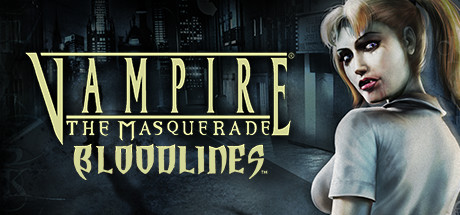Introduction
My first experience with Vampire was a LARP at the local State University in my hometown. I was 15 or 16 and I’d been talked into making a character by a friend. By that point, the first edition of Laws of the Night was out, and for a long time I didn’t realize that was effectively the 3rd edition of LARP rules for Vampires in the World of Darkness. When the Revised table-top rules came out, I played with friends and dove head first into the various games. At the time, the only 2nd Edition game I can remember reading was Werewolf, and even that I quickly replaced with its Revised version. So, I ‘grew-up’ with the Revised rule-set for the World of Darkness as my standard and even though I occasionally picked up an older Clanbook, or supplement, the game for me was highly polished and well crafted. That was largely my vision of the WoD until recently.
Martin Ericsson has mentioned his desire to recapture the spirit or essence of the first and second editions of Vampire and I had to admit, I didn’t know what he meant. So, I decided I would do my due diligence as a fan and seek out a copy of the game, as written in those early nights. A friend was generous enough to send me a copy of 1st Edition Vampire: The Masquerade a few months ago and I’ve slowly worked through it while reading about a dozen other gaming books.
My first impression was that it reminded me of quite a few books I loved that were written in the late ‘80s and early 90’s. For example, I was a big Robotech fan, and Palladium’s style was distinctive. V:TM, as different, transgressive, and progressive as it was, still has the vibe of a role-playing game of its era. That is not a negative critique. In fact, some of that vibe is part of its charm. It feels like a bit of a relic, but a relic that is still potent and possibly dangerous. 1st Edition Vampire is like its namesake, a being willing to sap your time and energy. It is a lovely monster able to see into your inner darkness. In some ways, I think it does this much more effectively than the Revised or even 20th Anniversary edition does. Why?
There are a few reasons, but they weren’t really easy to put my finger on at first. There is a lot of similar basic content from edition to edition, and though the rules were tweaked a little here and there, the core Storyteller System is the same. What’s different then? I think answering that question is complex, but I’m going to try and lay out a few of the elements I’ve noticed between the two.
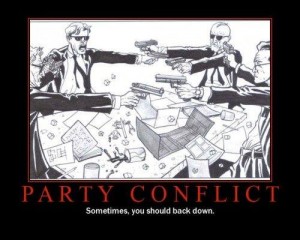
The Center of Conflict
In Revised, we are presented with a centuries long conflict between various clans of vampires. These vampires are split into two larger sects and several smaller, and arguably, equally important groups. The 13 major clans are embroiled in conflict with the Antediluvians, Caine, other Clans, and occasionally other supernatural elements of the World of Darkness. What is missing in this equation? Humanity. The central conflict in Revised is intra-Vampiric. Brujah versus Ventrue, Camarilla vs Sabbat, Inconnu hiding from the Jyhad (the ancient fight between elder and younger Kindred), these conflicts are between other Vampires.
In 1st Edition Vampire, these conflicts are only hinted at. They exist in the background. In 1st edition the central conflicts are, The Beast vs Humanity, Humanity vs Vampires, and Anarchist vs Establishment. These themes are present in Revised, but they are less central to the writing. To be clear, I’m talking only about the core books here, the 1st and 2nd edition adventures frequently focus on Vampire vs Vampire conflict, often conflating Kindred conflicts with mortal ones in a very confusing way. Dark Colony is a great example of this. As a setting, New England is Gothic and during the late 80’s early 90’s had a ton of Punk elements. However, the story lines presented in Dark Colony focused on ‘Armies’ of vampires in conflict with one another. This, in an area of the US where there were at most 100 vampires across New England. I think I’m exaggerating that number too, I am pretty sure it was closer to 40.
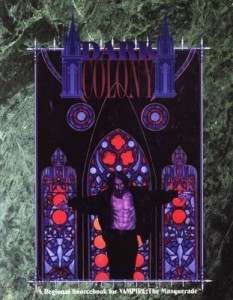
That being said, the 1st edition Core Book lays out a human focused world. Yes, you are a vampire, but you need to remember your humanity because you have to live with humanity. Based on demographics, you interact with humans more than you do with vampires. Kindred society is written as a slightly intangible element of the unlife of the Kindred. Considering the population density of vampires to humans was suggested to be around 1 to 100,000, that makes sense. Humanity is incredibly important for feeding, for social life, for a sense of belonging. The fight against the Beast is a constant one, because you are constantly surrounded by those whom you feed upon. In Revised, humanity fades into the background. Are they important? Yes, but not in the visceral way in which they are presented in 1st edition.
Story Goals/Motivations
Players and characters have multiple goals and they are presented with several options in all versions of the game. However, keeping in mind the central conflicts we discussed above, the goals of vampires in 1st edition are different from those in Revised. In 1st edition we are presented with several goals that players may focus on. All of them are based on some element of how vampires deal with humanity.
Humanity
Staring on page 129, Vampire 1st edition examines Humanity, the importance of clinging to a version of human behavior that is, honestly, unrealistic. Why is humanity put on a pedestal by vampires? There are a few reasons that I can see for this. Vampires have to contend with frenzy and the closeness of their Beast. The Beast is a visceral manifestation of the inhuman desire for blood that lives just below the surface of the Kindred mind. That’s one explanation at least.
To me, the Beast is simply the reflection of humanities capacity for inhumanity. Humanity has a beast, all of us have the ability to let slip an anger that cannot be contained, to harm others, to demean others, to lose empathy and murder. The Beast is a mechanic that brings those elements of our character as a species to the forefront. Vampires are monsters because they inherently lose their empathy for other human beings. They have to lose that empathy, if they don’t, they struggle to feed. Feeding from animals will only sustain you for a short time.
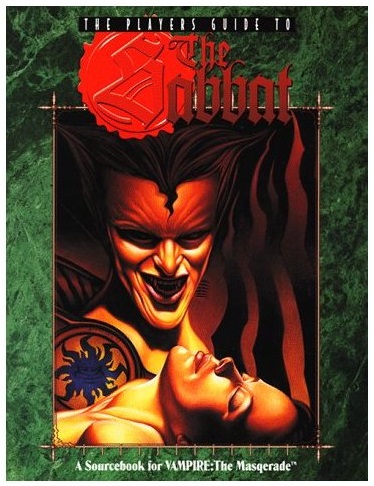
This is why Humanity is so important, it represents holding to a higher ideal than real people are capable or even cognizant of, so that the Vampire can attempt to retain their empathy. What if they don’t care about being empathetic to their cattle? In 1st edition the vampire’s choices are Wassail or Golconda, they either embrace their humanity or they descend into complete and utter depravity. This binary is less pressing in later books because of all the various Paths and Roads of Enlightenment that are offered. By removing the central question of humanity or oblivion, one of the central themes of the game is drastically shifted away.
Golconda
This search for enlightenment is presented directly after the section on Humanity. Golconda is presented as a common story line for players to seek. This changes in later versions of the game. This mystical state of being is relegated more and more to rumor, and even the Iconnu that have supposedly reached the state are represented as having probably fallen victim to falsehood by elder Cainites. In Revised, Golconda is played down significantly as a goal for the Kindred, its not impossible to reach, but it doesn’t feel like something you would have in most story lines.
In 1st Edition though, the search for Golconda, presented as difficult and rare, is still something that is achievable and there are specific, if seemingly limited benefits from this state. The vampire no longer experiences frenzy, as they have recognized the Beast is a part of who they are. If you ask me, they realize that the Beast is simply what makes them human, and by accepting that, they return to a state closer to normal people. The other two benefits of Golconda mentioned are a reduced need to feed and the ability for elder vampires to gain sustenance from humans and animals, even if they have the Methuselah’s thirst.
Diablerie
Between the sections on Golconda and Diablerie is another section, which I’ll touch on last. It’s peculiar to 1st edition and I think that peculiarity makes it special. That being said, Diablerie is the clearest element of Vampire on Vampire conflict in 1st edition. Young vampires hunger for the power of their elders as it brings them closer to Caine and closer to great power. The Diablerist in Revised has a significant social stigma attached to them, and though this is mentioned in passing in 1st edition, it does not appear as strongly in 1st. Diablerie is a valid path for the players, though it might keep them from attaining the last goal we’ll look at.
The Rebirth
When I came across the Rebirth I actually sat slack jawed for a few minutes. For me, the condition of vampirism presented by White Wolf had always been one of eternal torment. I had no inkling that in the 1st edition of the book the idea of returning to humanity was presented as a central story idea for player characters. “It is possible for a Vampire to escape the curse and become mortal again. Though it is exceedingly difficult, it is a major theme of the game and something that will direct the ambitions and thoughts of many characters.”
Holy… a major theme??! Not even close for any game I’d ever played in. I had never heard of this being a theme of Vampire: The Masquerade. By the time Revised came around it is basically impossible to turn a Kindred into a mortal once more. Yet, at the start, Rein – Hagen and the other writers had intended for Vampire to have this strong kernel of hope as an element of the game. This again is an element that makes humanity important. Wanting to be human again is a theme in a lot of vampire literature, so it makes sense, but it was removed as an element of Vampire through the years. I can’t even imagine wasting time fighting over who was in charge of undead politics if my characters knew this was possible. I can see most of them spending their nights, at least for their first 50-100 years, trying to be Reborn. Of course, this Rebirth isn’t easy, it requires killing one’s sire, or an antediluvian perhaps, sacrificing oneself, performing an arcane ritual, or even reaching Golconda. As a major theme of the game though, it changes things drastically.
Goals in Revised
Revised provides different goals. Kindred in revised are focused more on Vampiric politics, fighting against or for the Elders, and though Golconda is mentioned as something that some Vampires strive toward, it isn’t as immediate of a goal as it seems in 1st edition. The Rebirth was removed as a plot motivation early in Vampire. Which makes sense if you are focusing on the theme of eternal horror that Revised Vampire seems to express better than its earliest incarnation.
That is one area in which Revised provides something that 1st doesn’t capture well. In Revised, the idea that you have become forced into a society of monsters in which you will never escape is visceral. This is the battle of humanity in Revised. Camarilla society may espouse the values of Humanitas, but most Kindred lose their connection to those whom they feed upon. Killing becomes commonplace, normalized, and this disconnection, this lack of empathy is a central element the Beast can play upon. Manipulating younger vampires becomes natural to Elders, it’s how they survive, and being a childer to one of these elders is a curse. Imagine being forced to work for an abusive boss, now imagine you can never quit, never find another job, and never get promoted. That is one of the core horror elements that Revised develops excellently. It’s simply a different horror than 1st edition Vampire.
Other Elements
Introduction
Both editions start off with a story that explains the world of Vampire. Revised presents a narrative, a sire explaining the world of the Kindred to their childe to be. 1st is written as a note from a vampire to a human associate where they explain the hidden world of Vampires. The story in 1st has shades of Interview with the Vampire, and in some ways so does the story in Revised. Each is quite obvious in its exposition. Revised though, is accompanied by well crafted background images, art, and evocative pages. 1st is accompanied by a bit of Tim Bradstreet art, and pages that evoke a worn well crafted letter or journal. Both are awesome, but different. Revised speaks to a slightly sexy, exciting, powerfully impactful game were you play the Monster in the Dark. 1st speaks to a gritty, personal, slightly unfinished game that has a ton of hidden lore where you play the monster who wishes they were still human.
Font
Both editions use a different font at times, but the main font in Revised is small, maybe 11 point at the largest. Its readable, but at times almost too small. 1st edition is larger but overall the font styles seem similar between editions. This is a subtle thing though, the font for Revised is very late 90’s and the font in 1st is clearly early 90’s and they obviously fit into the era they are from. Maybe I’m the only font geek that would care, but this is something that set the tone for the book for me.
Art
The art in Revised is polished, beautiful, well drawn. I could go on and on about how awesome it is. Bradstreet is amazing, an artist that everyone should appreciate and admire. Bradstreet’s art in 1st edition, though? Iconic, but not the art I was really drawn to while I was reading through the book.
No, ironically the art that interested me the most was the single image story that was placed throughout the book. This story tells a tale of a woman who becomes embraced, proceeds through torpor, conflict, and power to the modern age. She then follows a similar predatory path to the one in which her existence began. She embraces a man that resembles her sire. Ultimately, she is killed, and the man she embraced is freed from the Curse of Caine and he returns to his mortal life. This story is compelling for the humanity lost by the woman in question as she proceeds through her unlife, and just as compelling for the way in which she steals the life of the man she embraces and the way he fights to regain that life. I’m not sure who the artist for that story is, it doesn’t look like Bradstreet’s art, but I’d love to give whomever they are credit.
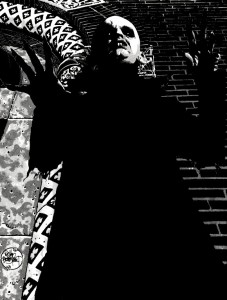
Character Options
1st edition Vampire assumes the 7 Camarilla clans are the only options for characters. This reduces the amount of conflicts possible with this rule set. Revised provides us with the 13 clans from the beginning, including the pillar Sabbat clans and the Independents, whom were only hinted at in 1st edition’s core book. This limited set of options focuses the story more on the nuances between Kindred and humans. Of course the conflict between Brujah anarchs and Ventrue bluebloods is present, as are other elements of conflict between the Camarilla clans. However, it doesn’t feel like powerful creatures fighting against one another is the central theme of the game. In Revised, the camera lens is firmly on the world of the Kindred, in 1st, the story is shot from the shoulder of the vampire, as they gaze upon the herds of humanity on which they prey.
When I read 1st edition I could see why people wanted to play this game so much. I wanted to play Revised when I read it as well. Vampire: The Masquerade has changed a lot over the years, and if you ask me, one is not better than the other. They are simply different. I can respect the desire of the new White Wolf to try and recapture some of the themes in 1st edition. Those themes are important. Humanity should be important to the Vampire. Humanity sustains them, humanity is the essential element which they must draw upon to survive. Finding ways to refocus the camera on humanity, will have an interesting impact upon the games that people craft together. I look forward to 5th edition Vampire, if it finds a way to capture the essence of 1st edition, and the skillful hand of Revised and the 20th anniversary edition, then it will be a wonderful game to add to my collection.
This article was written by Josh (he/him/his) the admin of this spectacular website. Consider donating to our Patreon if you would like to support other columnists.
*Note, all opinions are the opinions of their respective Authors and may not represent the opinion of the Editor or any other Author of Keep On the Heathlands.

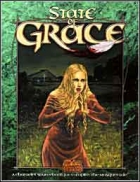
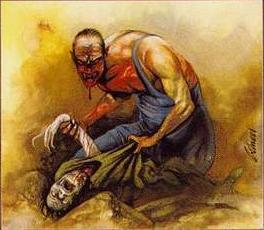

 The staff at White Wolf were willing to do an interview with the staff of columnists here at Keep On The Heathlands. Some of the following questions reference discussions had at The 25th Anniversary Grand Masquerade event in New Orleans over the Labor Day Weekend. Videos to
The staff at White Wolf were willing to do an interview with the staff of columnists here at Keep On The Heathlands. Some of the following questions reference discussions had at The 25th Anniversary Grand Masquerade event in New Orleans over the Labor Day Weekend. Videos to  Dhaunae De Vir (Manager of Availability – Business Development): Of course. We have just released the full-length
Dhaunae De Vir (Manager of Availability – Business Development): Of course. We have just released the full-length  Martin Ericsson (Lead Storyteller and Brand Architect): We’re imagining a world where the shadows are shrinking. The awakened monsters have always brushed shoulders, but the vastly different art direction and surface tonality (not to mention the slightly messy rules) of the different game lines have made crossovers run a risk of being a bit campy. This time we try to place them all in our own world, in dangerous and fascinating places where their rising conflicts makes WoD’s mysteries, political themes and menacing horror come to the forefront. For example, we are developing Werewolf in close parallel to Vampire, hoping to make the most of the tension between the cold corporate predation of the Camarilla elite and the just but oh-so uncontrollable just war of the Garou Nation. The games will be perfectly standalone, but still manage to link up in specific ways. We’re not imagining a game made for multi-creature parties, rather set them up as perfect antagonists and philosophical counterpoints, as well as rivals for the fate of humanity in desperate times.
Martin Ericsson (Lead Storyteller and Brand Architect): We’re imagining a world where the shadows are shrinking. The awakened monsters have always brushed shoulders, but the vastly different art direction and surface tonality (not to mention the slightly messy rules) of the different game lines have made crossovers run a risk of being a bit campy. This time we try to place them all in our own world, in dangerous and fascinating places where their rising conflicts makes WoD’s mysteries, political themes and menacing horror come to the forefront. For example, we are developing Werewolf in close parallel to Vampire, hoping to make the most of the tension between the cold corporate predation of the Camarilla elite and the just but oh-so uncontrollable just war of the Garou Nation. The games will be perfectly standalone, but still manage to link up in specific ways. We’re not imagining a game made for multi-creature parties, rather set them up as perfect antagonists and philosophical counterpoints, as well as rivals for the fate of humanity in desperate times.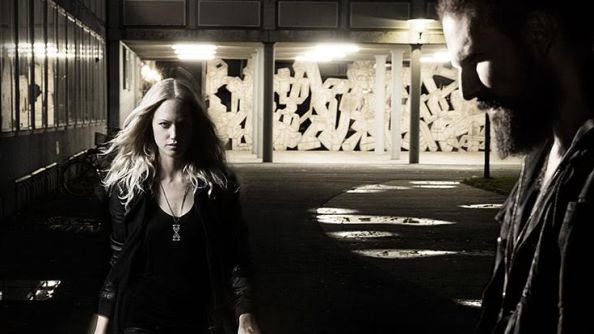


 Tobias (CEO White Wolf): Isn’t it about time that cultures around larps, RPGs and similar forms of entertainment finally get the credit they deserve? Look at the impact World of Darkness had on the modern vampire and werewolf myth today established in numerous film, television and other forms of entertainment. This is serious work by great authors and we do appreciate and applaud the recognition of it.
Tobias (CEO White Wolf): Isn’t it about time that cultures around larps, RPGs and similar forms of entertainment finally get the credit they deserve? Look at the impact World of Darkness had on the modern vampire and werewolf myth today established in numerous film, television and other forms of entertainment. This is serious work by great authors and we do appreciate and applaud the recognition of it.